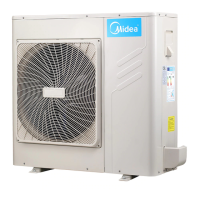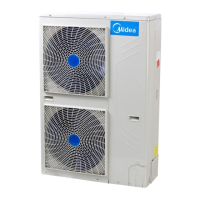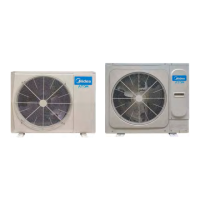Why is my Midea MDV-V100W/DN1 having a low cooling effect?
- EevanjacksonAug 17, 2025
If your Midea Air Conditioner isn't cooling effectively, several factors could be at play. First, ensure that both the outdoor and indoor unit heat exchangers are clean. Next, check and clean the air filter. Make sure that the inlet and outlet of both units aren't blocked, ensuring smooth airflow. Close any open doors and windows, and use curtains to block direct sunlight. Reduce any excessive heat sources in the room. If the outdoor temperature is too high, the AC's cooling capacity may be reduced, which is normal. Finally, check for refrigerant leakage and recharge if necessary.




